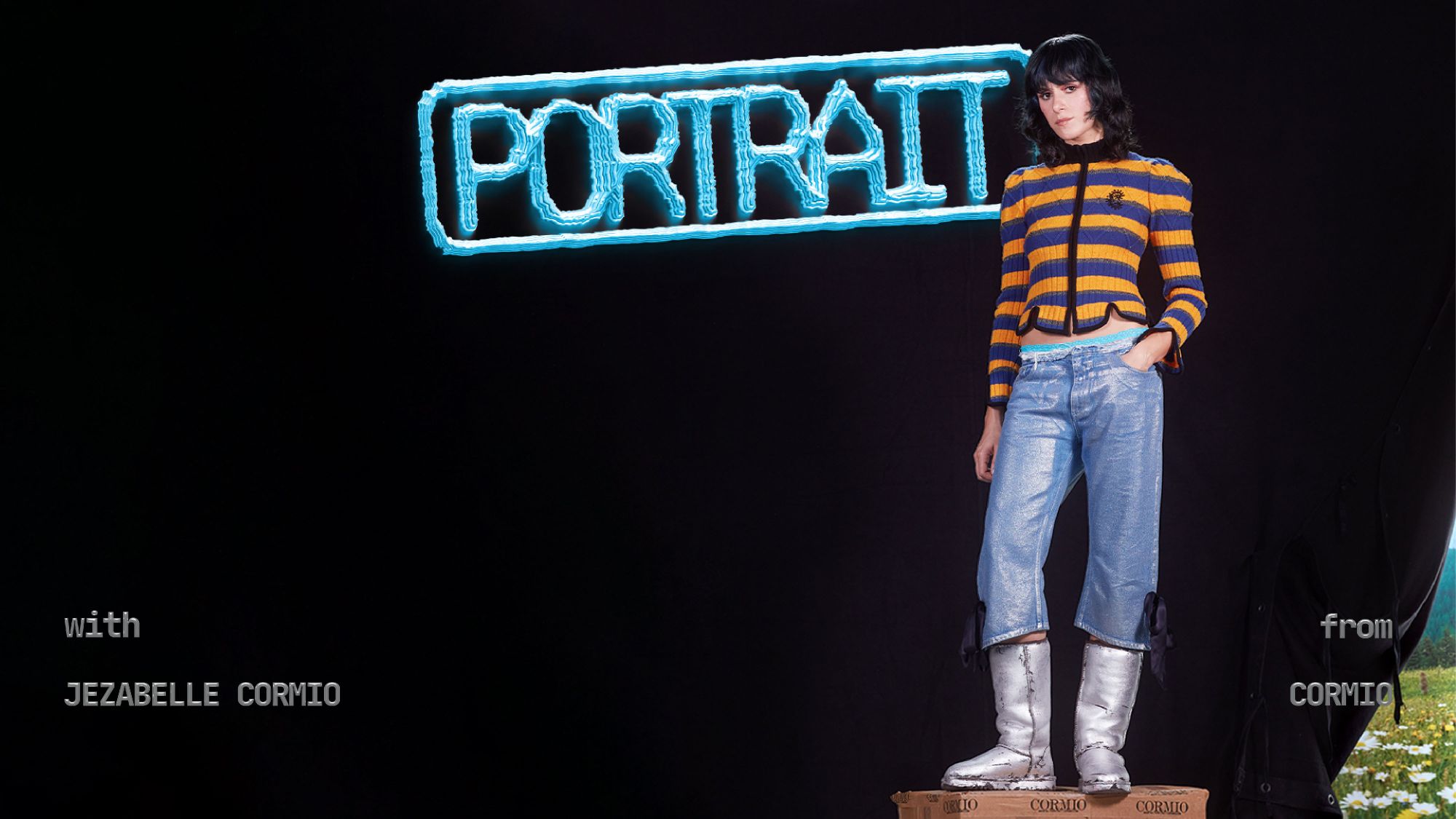
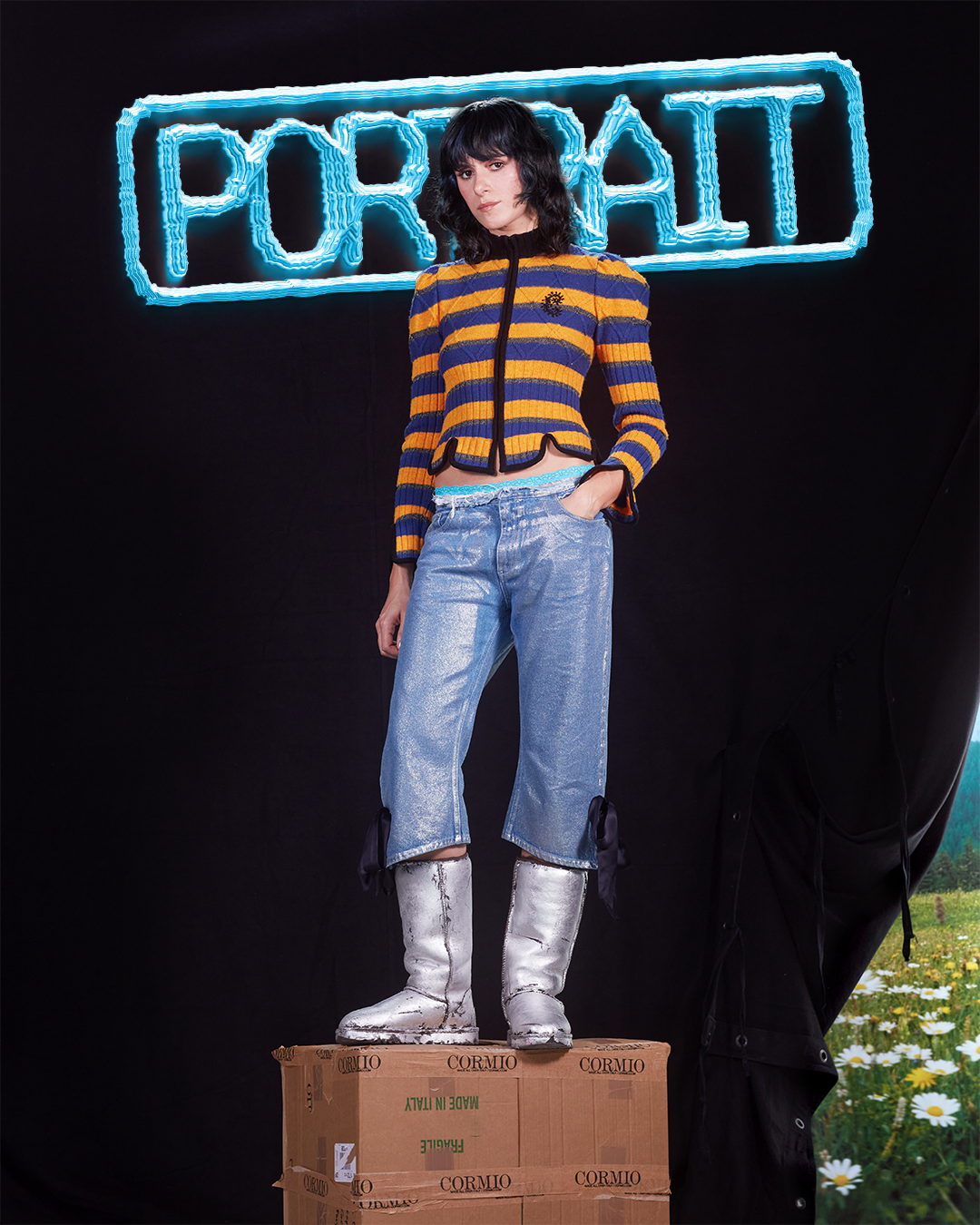


How do you explain to those who aren't familiar with fashion, why writers and journalists in the field love the word "visionary" so much? The term stumbles onto the pages of magazines and online sites every time a designer or creative is to be described, without much logical rigour—or at least, that's how it seems. Setting aside dictionary definitions that would bore anyone, to understand why the fashion world admires this term so much one must find inspiration in the collections and words of Jezabelle Cormio, founder and creative director of her eponymous brand. Cormio was launched in 2019, immediately establishing itself among the most followed and anticipated emerging brands at Milan Fashion Week. In addition to a tremendously captivating aesthetic, linked to the passions of the youthful world with hues reminiscent of hand-painted ceramics in pink, yellow, and mint green, and silhouettes incorporating ruffles in a street style look, what made Cormio a flagship brand of Fashion Week was its attention to detail. It's not about embroidering the edges of the guests seats or inviting established celebrities and journalists (although in the latest shows, one could see Vanessa Friedman of The New York Times sitting front row and italian singer and songwriter Madame walking the runway), but about making the show, as the designer tells us, «a moment where everything finally makes sense,» where you can convey a concept much deeper than appearances through a look or a soundtrack. Cormio's latest runway show, the SS24, told the story of women's fear.
Cozied up on a couch, a few moments after the end of the shooting, Jezabelle Cormio talks about the importance of this last runway show in relation to the recent events in Italian crime news. Just a few hours earlier, the body of the 105th femicide victim of 2023 had been found. «This summer was incredibly heavy,» recalls Cormio, «her death became a kind of catalyst. It accelerated our awareness and our stance.» Feminism is a topic of great interest for the designer, who, even after presenting her latest collection on the theme of fear, returned to the subject for further discussion. Watching Yuri Ancarani's documentary Il popolo delle donne, she tells us, she found in the film what she wanted to express through her designs. «The psychoanalist Marina Valcarenghi argues that violence is a confession of fear and weakness,» explains Cormio, «it is proof of how they don't feel up to the moment, feel inadequate, and are afraid of losing control.» Cormio carefully chooses her words to narrate the connections between gender violence and her collection with rare sensitivity, backtracking in the conversation and correcting herself whenever she feels she has used the wrong term. «In the collection, I had thought about the tension that always exists between men and women» she adds, describing the significant difference that affects the approach of the "two genders" to the problem: while women are becoming more informed, initiating debates on the issue of violence and engaging with each other, men «feel a bit left out, in a sense, they also begin to accuse the fear of being abandoned or left behind and not being able to participate to the conversation anymore. I just wanted to shake things up and break the ice. I mean, why are you afraid of me? I'm afraid of you, we don't understand each other.»
Certainly, choosing to narrate feminism through fashion is not something new, but the way Cormio tackles the issues that characterise every woman's life tastes like a breath of fresh air, perhaps because it's more instinctive and honest. Continuing such a conversation, especially in this period, is a gamble for an emerging brand, but for Cormio, having a conceptual purpose is the only real reason behind the runway show. «I didn't want to make a too sterile speech,» comments the designer. While luxury giants brought the cause to the runway in their own way, with feminist slogans and ancient stories all kept at a safe distance from those that unfortunately repeat daily, independent brands like Cormio take risks. The runway show, after all, «is obsolete only for those who don't do it with clear ideas,» she adds, «very often there isn't much to say.» Are emerging designers the ones who have more to say, then? «Yes, because we have less to lose.»
After studying at the prestigious Royal Academy of Fine Arts in Antwerp, under the guidance of one of the famous designers of the Antwerp Six, Walter Van Beirendonck, the young designer brought some of the playful and unconventional school of the Belgian teacher to Italy. «Maybe I had it inside me; that's what attracted me to that circle,» Cormio recalls. «Certainly, a certain level of elegance or sensuality was never imposed on us; it was never a parameter.» Like Van Beirendonck's designs, Cormio's creations take current themes and repackage them through irony and colour. «In that university, the main value was to create your own DNA,» she explains, because, despite admiring her professor's work, she wanted to distance herself from his aesthetic at all costs. «Those who copied Walter's style a bit too much were losers from the start,» she comments. «Every time I started a collection, it felt like entering a jungle and not knowing how to get out of it; maybe I wouldn't show up for a month, then I would come back, they would tell me they thought things were going very badly, but no, it was fine.»
Despite the controversies and obstacles she had to face to make her way in Italy, Cormio is glad to have returned home to launch her brand. And although the fears and stress that come with running an independent company are endless, Italian craftsmanship «is unmatched elsewhere,» she explains. At the same time, she acknowledges that the Italian fashion system still has a long way to go, especially in supporting young creatives. Awards, scholarships, internships and stages have been put into place, but at the governmental level, she admits, «they appreciate you only when you have already done what you had to do. Their support is too little to make a difference; it's never thanks to them that you get anywhere. It's truly an Italian case; I've never seen it elsewhere.» It was the studies in Antwerp, so anchored in the perception of the fashion brand as its own DNA, as a product of the founder's mind and not the system, that contributed concretely to the development and subsequent affirmation of Cormio's aesthetic, linked to a Tyrolean and traditional imaginary revisited through an urban lens. Italian folklore, according to the designer, «is a great contradiction.» Years ago, seeing Tyrolean-style accessories, clothing, and kitchen utensils in the centre of Rome or Milan, Cormio noticed how Italians asserted their social status through mountain souvenirs. «It was a bit like they wanted to let us know that they had found an alternative aesthetic to the typical Italian one, in contrast to the world of the Italian with the branded down jacket, always tan,» she adds. Visiting the Dolomites, Cormio discovered that Tyrolean culture is much more "rough" than what people reporting it in the city wanted to believe: «it's actually made of beer, sausages, dirty jokes, aprons with pigs mating.» From there, the idea of «stealing an aesthetic from the rich to continue making general culture» was born.
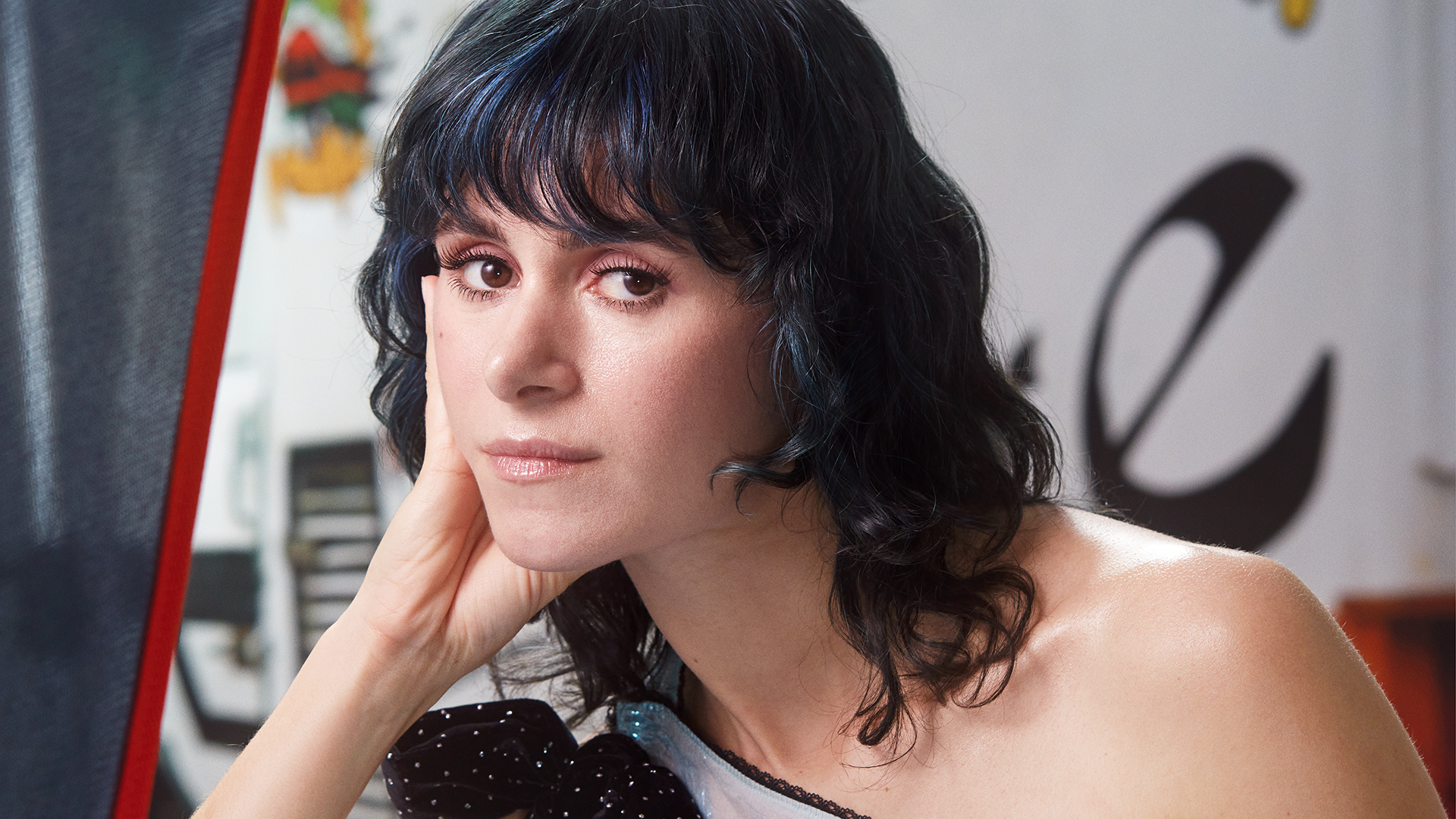
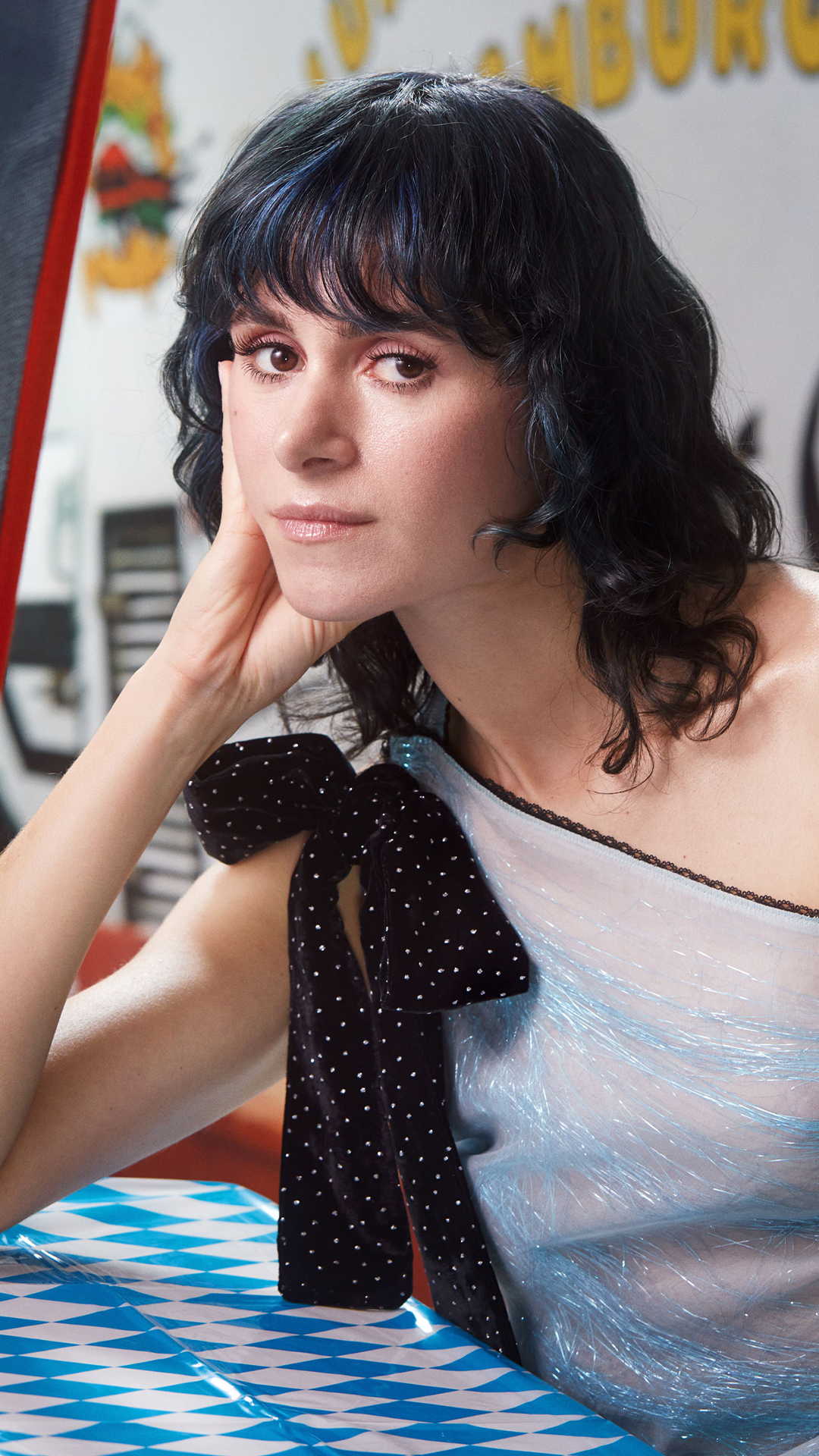


The narrative that interlocks tradition with the unexpected is also reflected in the brand's collaboration with Madame, who dresses Cormio on stage and on the runway, recently at the SS24 show. Working together with the singer, author of ‘L’Amore’, her latest album, has allowed a growing company like Cormio to travel at unprecedented speeds. «Some people can really change things,» the designer says about the celebrities and stylists who choose her pieces. «For me, Madame is really the crystallisation of what I want to say. There is a great harmony between our works; they are different but fit perfectly.» For Cormio, Madame fully embodies the philosophy of her brand. «Freedom and intellect where you didn't expect it; the fact that she never really needs to prove she is a woman or be feminine. Her uniqueness is what people who love her like, it's what I would like too: that there is no binary of femininity. In the end, everything is much more interesting when it's more fluid.»
At the end of our interview, after the usual formalities, a word gets stuck in our mind. To be visionary, you need to travel with imagination, but in 2023 fashion can no longer afford to settle for a dream. Cormio has established itself in an enigmatic and exclusive system—moreover, in Italy—bringing to the forefront the same social themes that other brands mention only out of scruple. Instead of resorting to clichéd stylistic codes, she sought in her personal experience a subject to explore and rewrote it according to new rules, marrying feminism to the delightful, Tyrolean aesthetics to the gritty and urban spirit of young people and artists in the Italian music scene. She lets herself be tempted by fantasy but manages to anchor the joy and fun that fashion gives to the problems of our society without making it weigh on us, and above all, without bending to the rules of elegance which in Italy always seem compulsory. Cormio's real challenge was to make itself heard, not to break through, because the success of the brand was already written in the mountains of South Tyrol, hidden among the palaces of Antwerp, embroidered on the pot holders of Rome's upper class, and in every female adolescence dream.

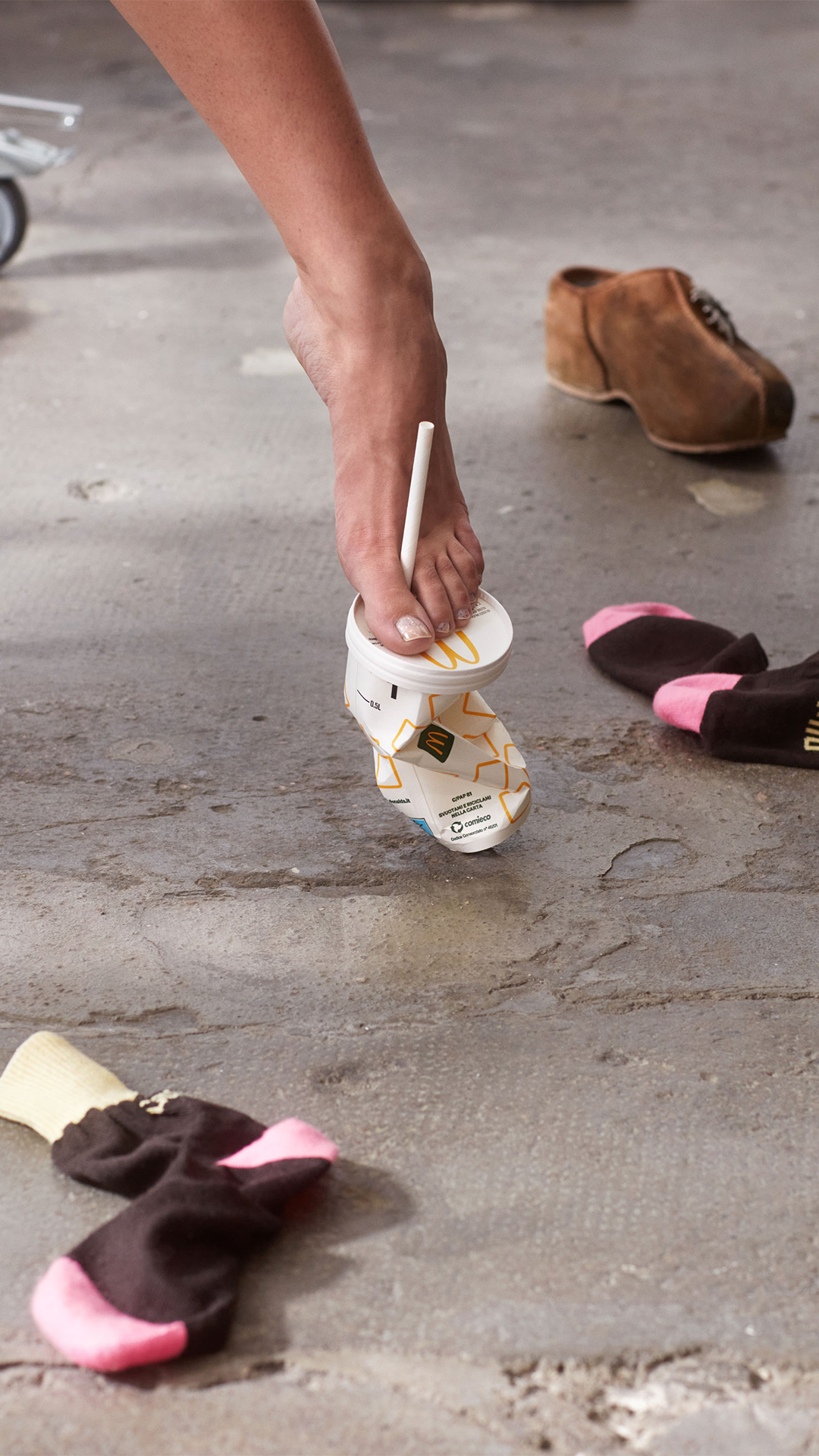


Photographer: Pietro Cocco
Light Assistant: Luca Baldini, Carlo Gerli
Set Designer: Asia Calzà
Make Up: Anna Maria Negri
Hair: Gabriele Marozzi
Interview: Adelaide Guerisoli


































.jpg)





















